
World Population Day, July 11, is just around the corner. It was established in 1989 by the Governing Council of the United Nations Development Program to turn our focus to population issues.
At the time of the first World Population Day, about 5.25 billion people trod the Earth. Now, about 7.7 billion of us share the globe, and the number is expected to increase to 8.5 billion by 2030. By 2100, it is projected that the population will be above 11 billion, more than double the population on the first World Population Day 30 years ago.
To identify the countries with the fastest growing populations, 24/7 Tempo reviewed the 2018 World Population Data Sheet produced by the Population Reference Bureau (PRB)
Today’s largest countries in population — China, India, and the United States — are expected to remain among the most populous, though their growth rates are not among the fastest. According to data recently released by the population data-gathering organization Population Reference Bureau, that distinction belongs to 20 countries in Africa and Asia, where populations have surged in recent years. The rapid population growth is expected to continue into 2050, fueled by increased life expectancy and declining mortality and high fertility rates associated with a largely youthful — and booming — population.
Bigger populations can create strain in lots of different areas of society. Poverty is an ever-present reality in many of the countries with the fastest-growing populations: 15 of the 20 have per capita GDP PPPs below $5,000. Increased family sizes can strain meager financial resources to beyond imagination.
Burgeoning populations can increase pressure on the land and natural resources, as evidenced in places such as Chad and Burundi, which are among the countries doing the least to protect the environment.
Family planning was recognized as a human right half a century ago, with standards established to uphold that right. But access to family planning information can be costly, and funding for programs has been cut in recent years.
Quality of life can suffer, as in South Sudan, where an ongoing civil war has made that nation one of the most miserable places on Earth.
Other population-related issues include access to health care, poverty, and small gender gaps. And these are the best countries for gender equality.
Click here to for the 20 countries with the fastest-growing population.
Methodology:
To identify the countries with the fastest growing populations, 24/7 Tempo reviewed the projected population growth between 2018 and 2030 from the “2018 World Population Data Sheet with Focus on Changing Age Structure” produced by the Population Reference Bureau (PRB). The PRB is a private nonprofit organization focusing on collecting and supplying data for academic purposes on the environment, and health and structure of populations. Projected population growth from 2018-2050, births and deaths per 1,000 people, and the rate of natural population increase were also derived from the World Population Data Sheet. Data on GDP PPP (gross domestic product and purchasing power parity), unemployment, and labor force came from the World Bank’s World Development Indicators Database, and all data is for the most recent year available.

20. Guinea
> Projected population growth 2018-2030: 37.0%
> Population 2018 11.9 million
> Projected population 2030: 16.3 million
> 10-year population change through (2007-2017): 26.0%
The country’s 37% population growth by 2030, the 20th highest among countries considered, is likely the result of these continued trends. Among the factors contributing to Guinea’s burgeoning population growth are a high birth rate — 39 births per 1,000 people compared with 18.7 for the world average — and an extended life expectancy. In 1960, the life expectancy at birth in the West African nation was below 35 years; by 2017, that figure had surged to 58 year for men and 61 for women.
[in-text-ad]

19. Comoros
> Projected population growth 2018-2030: 37.5%
> Population 2018 0.8 million
> Projected population 2030: 1.1 million
> 10-year population change through (2007-2017): 26.9%
A climbing birth rate and a slowing mortality rate, combined with the fact that more people immigrated into the country than emigrated out of it, added up to a population boom in Comoros. As of 2017, this small island nation off the east coast of Africa had a population density of more than 437 people per square kilometer, up from just over 104 in 1961. The country’s population growth of over 37% by 2030 will no doubt exacerbate population density.
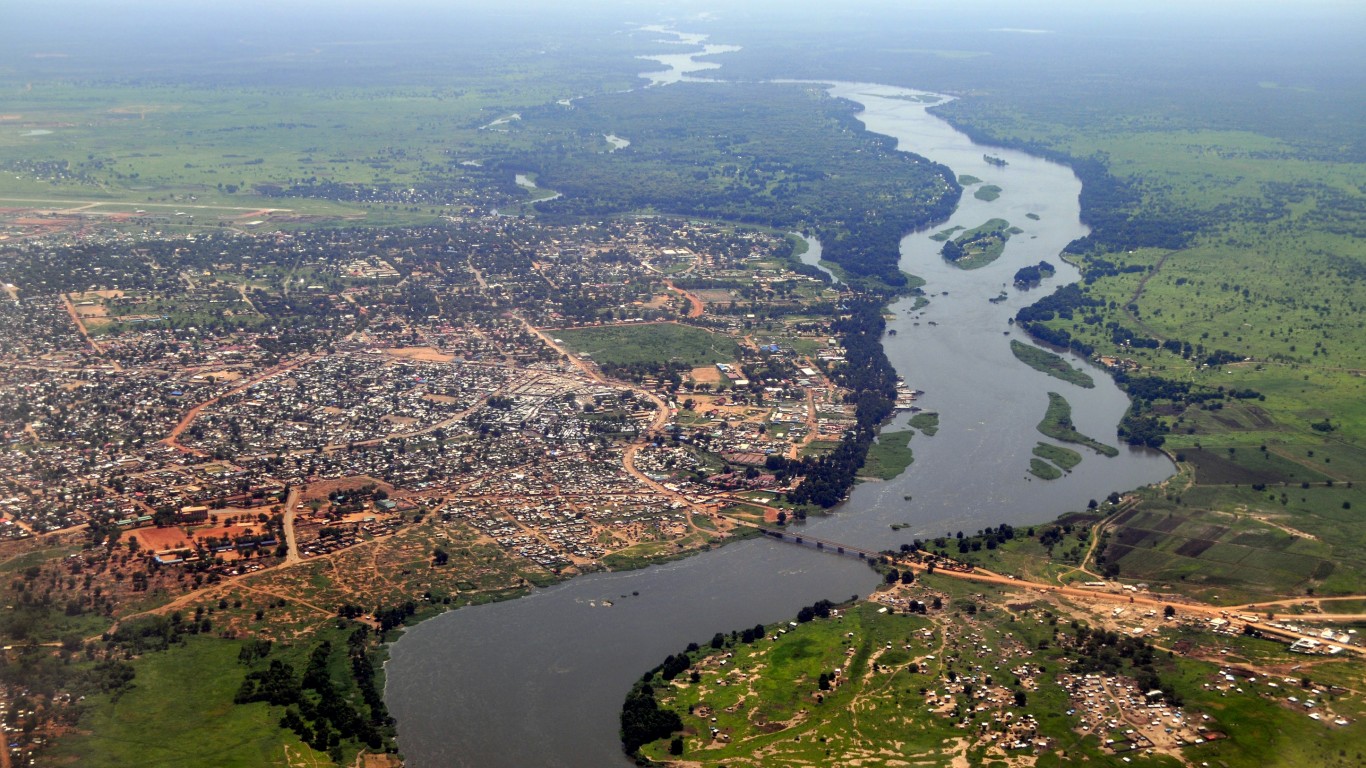
18. South Sudan
> Projected population growth 2018-2030: 37.7%
> Population 2018 13.0 million
> Projected population 2030: 17.9 million
> 10-year population change through (2007-2017): 42.0%
Since gaining its independence in 2011, the Republic of South Sudan has struggled with political strife, food insecurity, high inflation, and economic instability. Millions of people have been displaced, both within the borders of this relatively new Central African nation, and to surrounding countries. Nevertheless, the population has increased — one reason is because refugees are entering South Sudan from Sudan — and is expected to climb to nearly 18 million in 2030.
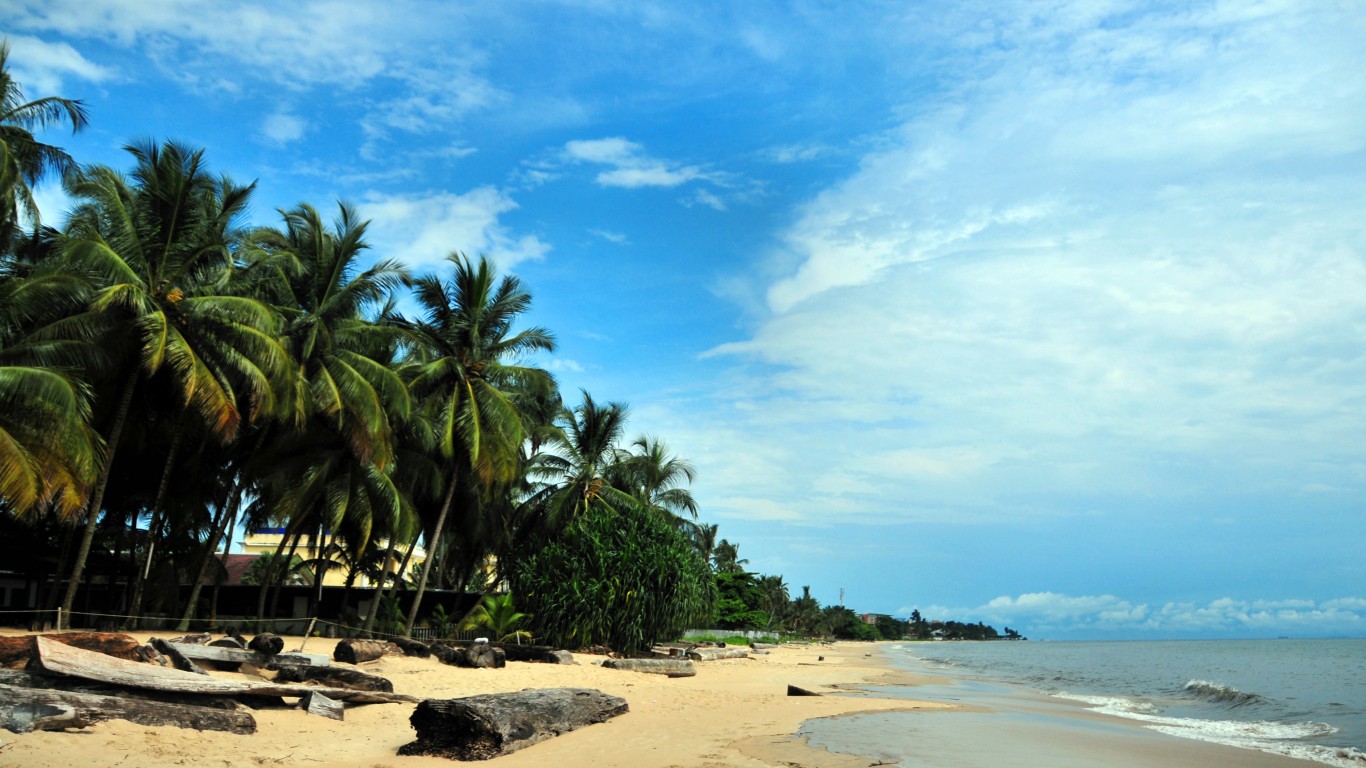
17. Gabon
> Projected population growth 2018-2030: 38.1%
> Population 2018 2.1 million
> Projected population 2030: 2.9 million
> 10-year population change through (2007-2017): 36.0%
The West African country of Gabon has a youthful population and a vibrant economy. As of 2018, 36% were under 15 years old, and only 4% above age 65. Worldwide, the share of those 65 and older in 2018 was 9%, according to data from the Population Reference Bureau. In addition to the booming annual birth rate, population growth in Gabon gets a boost from migrants from other African countries such as Benin, Cameroon, Equatorial Guinea, Mali, the Republic of Congo, and Senegal, who cross the borders in search of employment in Gabon’s booming economy.
[in-text-ad-2]
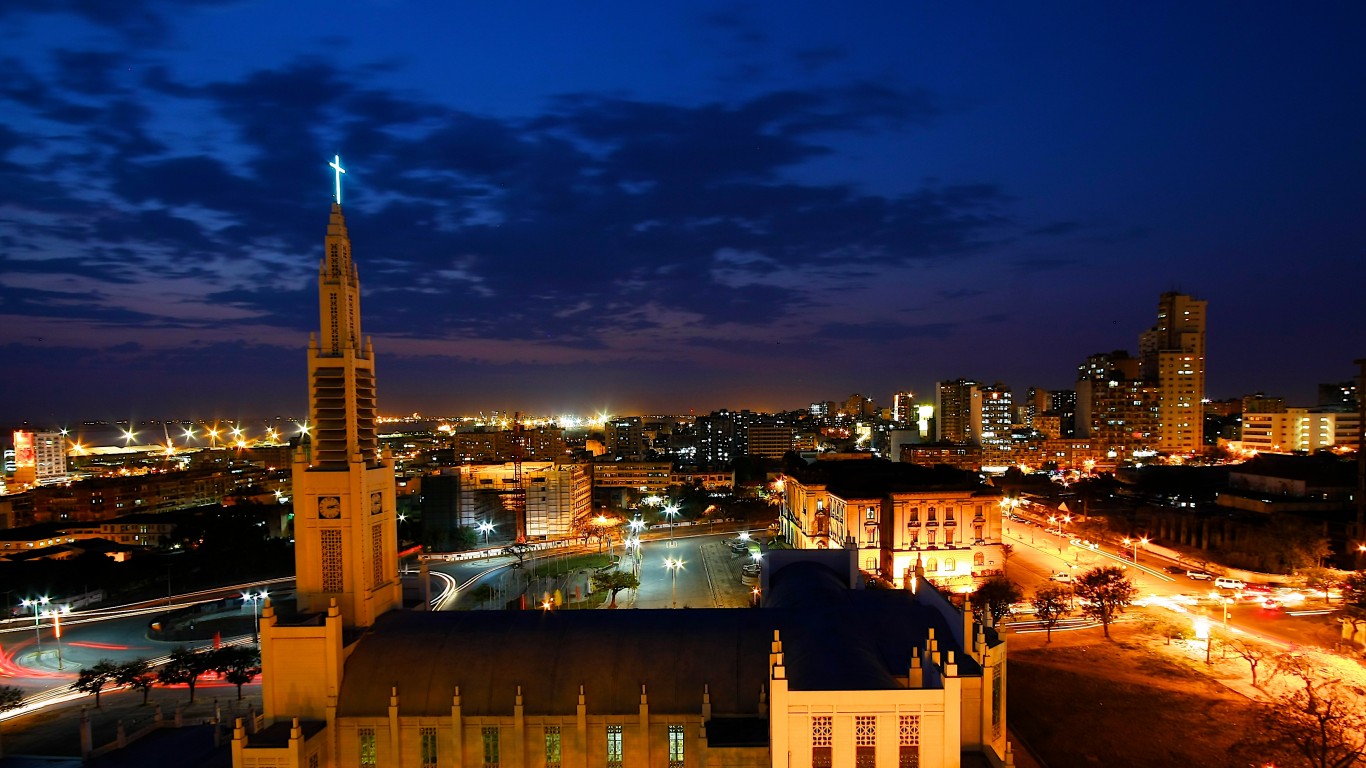
16. Mozambique
> Projected population growth 2018-2030: 39.0%
> Population 2018 30.5 million
> Projected population 2030: 42.4 million
> 10-year population change through (2007-2017): 33.7%
With a per capita GDP PPP of just over $1,100, the East African nation of Mozambique is among the poorest countries on Earth. From 2007 to 2017, the population rose by about one-third, and roughly 45% of the population is below age 15. Population growth of 39% is projected by 2030. The economy of the nation, which gained independence from Portugal in 1975, was boosted by the discovery of gas fields off the coast in 2011.
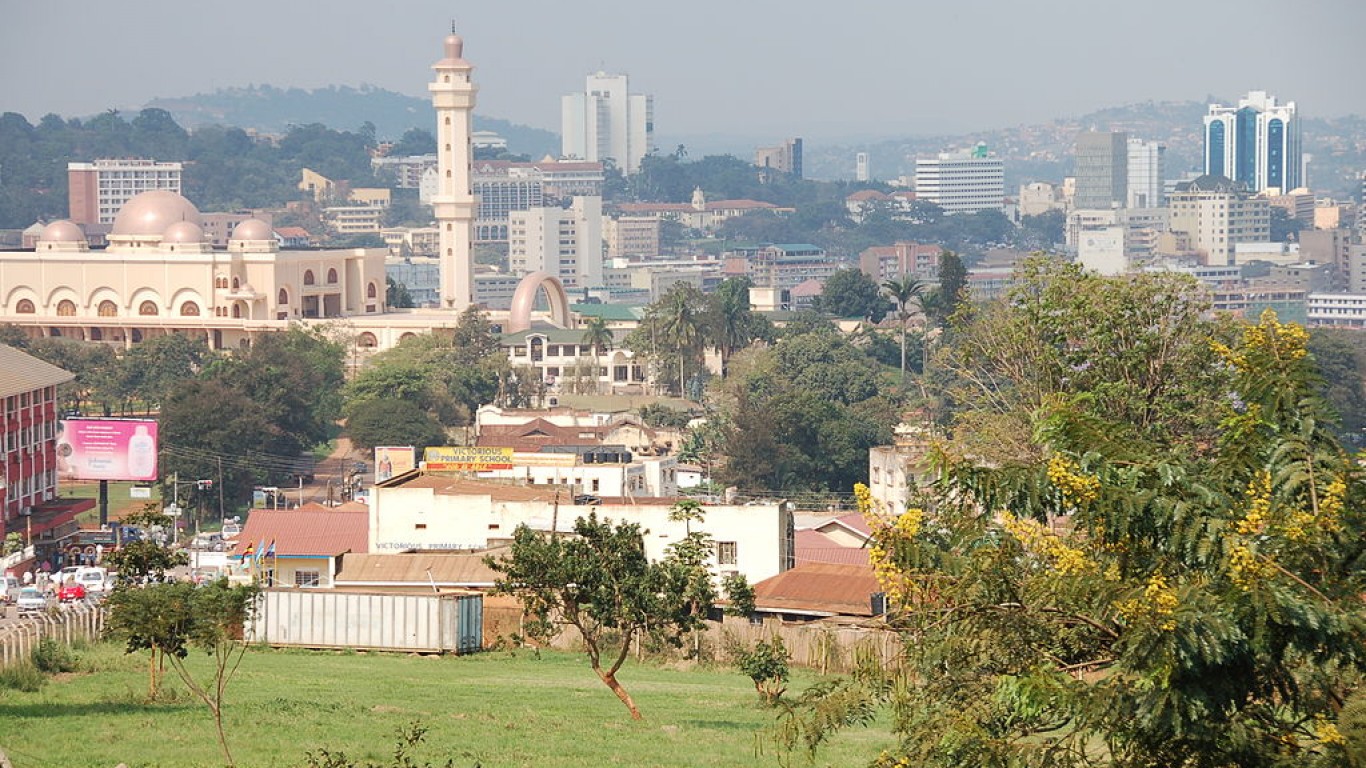
15. Uganda
> Projected population growth 2018-2030: 39.7%
> Population 2018 44.1 million
> Projected population 2030: 61.6 million
> 10-year population change through (2007-2017): 40.1%
Uganda has done well when it comes to dealing with health crises. For example, it has contained several Ebola outbreaks over the years. However, this week Uganda is dealing with renewed concerns over that disease, which may have been carried to Uganda from neighboring Democratic Republic of Congo. The country may be facing another kind of crisis, as the population of this eastern African nation is projected to climb to 95.6 million by 2050, a near 40% growth. The population is surging because of a lack of family planning, and the government is worried about pressure on resources and rapid urbanization. As of 2018, almost half Uganda’s residents were under age 15, with a mere 3% over 65; by 2050, that older segment is expected to increase by only one percentage point.
[in-text-ad]

14. Gambia, The
> Projected population growth 2018-2030: 40.9%
> Population 2018 2.2 million
> Projected population 2030: 3.1 million
> 10-year population change through (2007-2017): 36.5%
The Gambia is one of the least populous countries in Africa, with a 2018 population of just over 2.2 million. Though relatively small, the country’s population has increased by 36.5% over the past 10 years. The figure is expected to surge by another nearly 41% by 2030, and is projected to break 5 million by 2050, more than double what it is today. Currently, the population density is about 220 people per square kilometer, and undoubtedly there will be less room to roam in the coming decades.
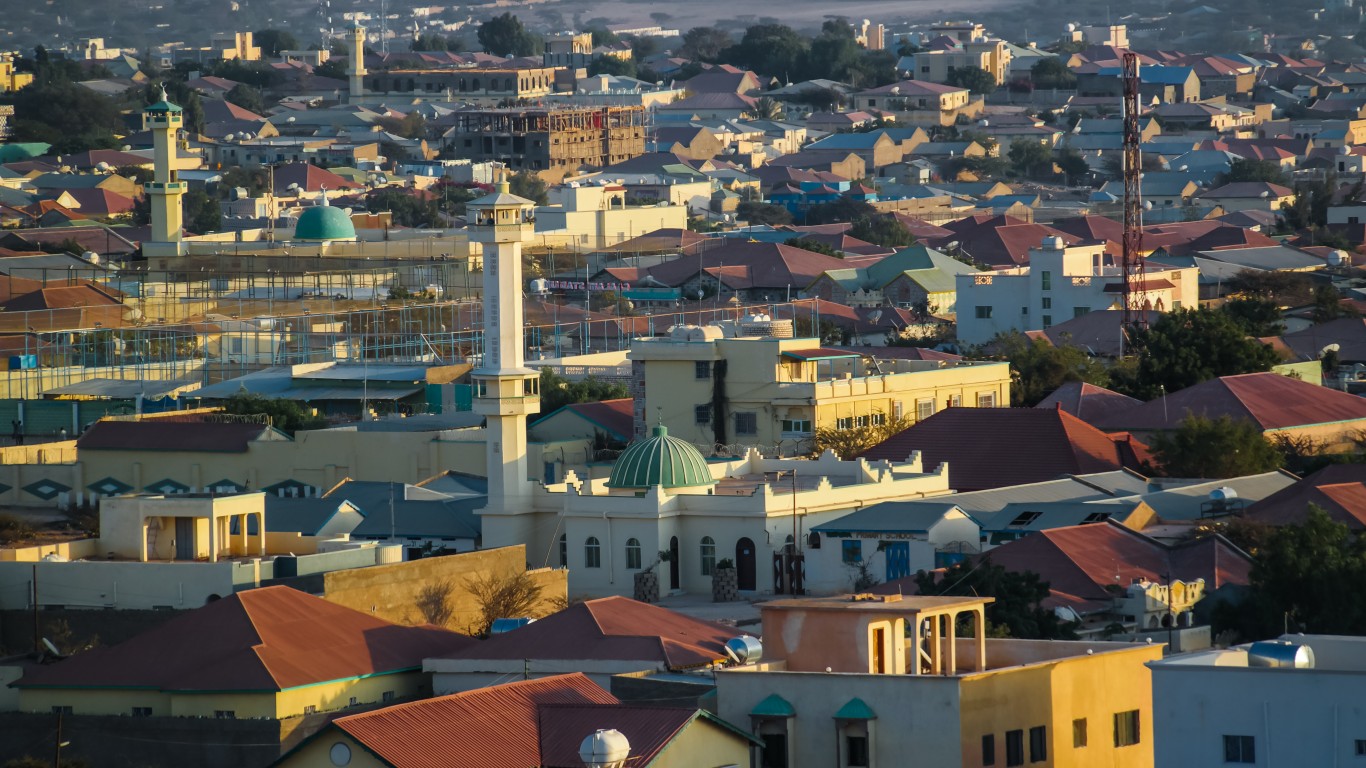
13. Somalia
> Projected population growth 2018-2030: 41.4%
> Population 2018 15.2 million
> Projected population 2030: 21.5 million
> 10-year population change through (2007-2017): 33.6%
Though it ranks at No. 190 in life expectancy (55 years for men; 58 for women), Somalia ranks fifth in birth rate (43 births per 1,000 people), and the population has climbed by more than one-third in the past 10 years. More than 60% of the population of this coastal East African country is below age 25, and the national headcount is expected to jump by more than 40% by 2030.

12. Tanzania
> Projected population growth 2018-2030: 41.6%
> Population 2018 59.1 million
> Projected population 2030: 83.7 million
> 10-year population change through (2007-2017): 36.7%
Tanzania borders the Indian Ocean, between Kenya and Mozambique. Its inhabitants are spread out over an area more than twice the size of California. Roughly two-thirds of the population is under age 25, making it likely that the birth rate will remain high for years to come and may be partially behind the near 42% projected population growth. Tanzania’s growing population also includes migrants and refugees. The nation has enjoyed domestic stability and is home to two of Africa’s biggest tourist attractions – Africa’s highest mountain, Kilimanjaro, and national parks such as the Serengeti.
[in-text-ad-2]
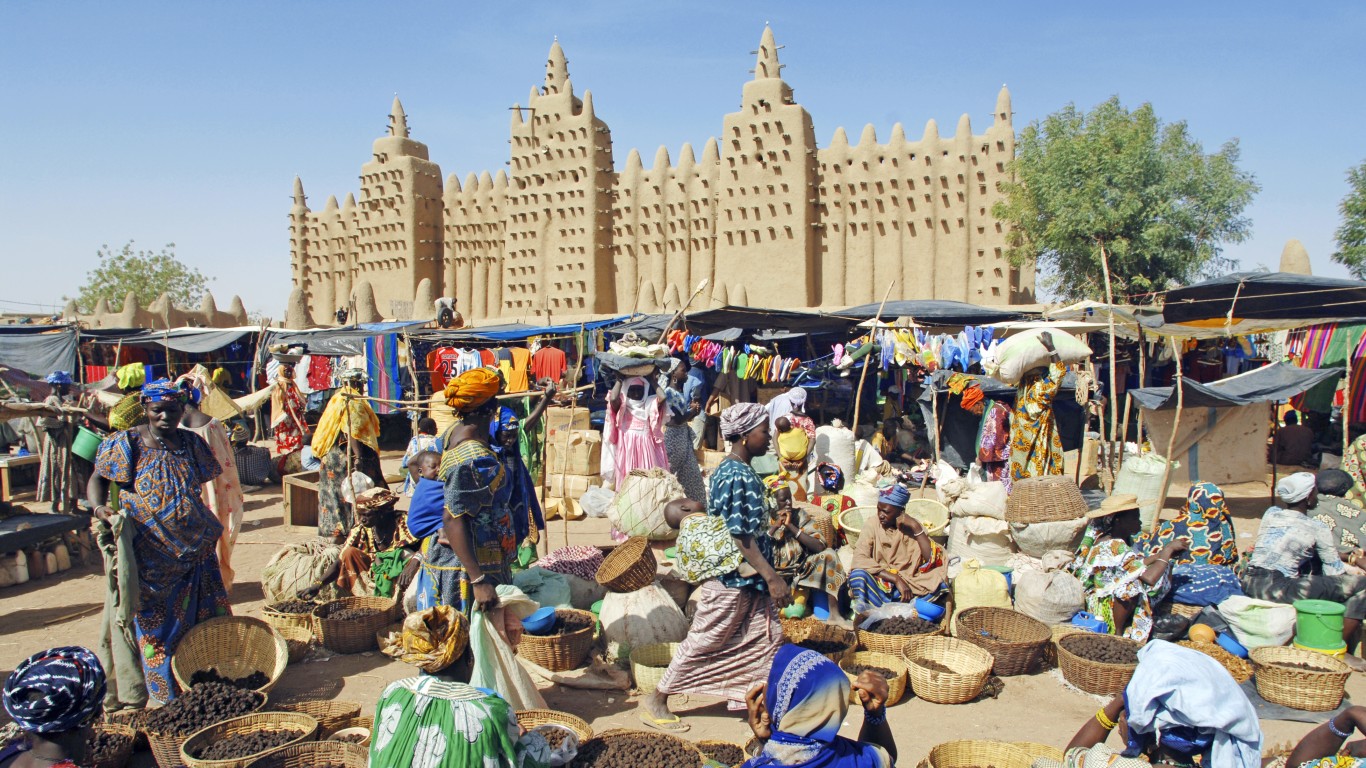
11. Mali
> Projected population growth 2018-2030: 41.8%
> Population 2018 19.4 million
> Projected population 2030: 27.5 million
> 10-year population change through (2007-2017): 35.6%
With an annual birth rate of 45 births per 1,000 residents, Mali is in a three-way tie with Angola and Chad for the second-highest birth rate on Earth. The population in the West African nation has surged by more than one-third over the past 10 years, a rate that is expected to soar to more than 40% by 2030.
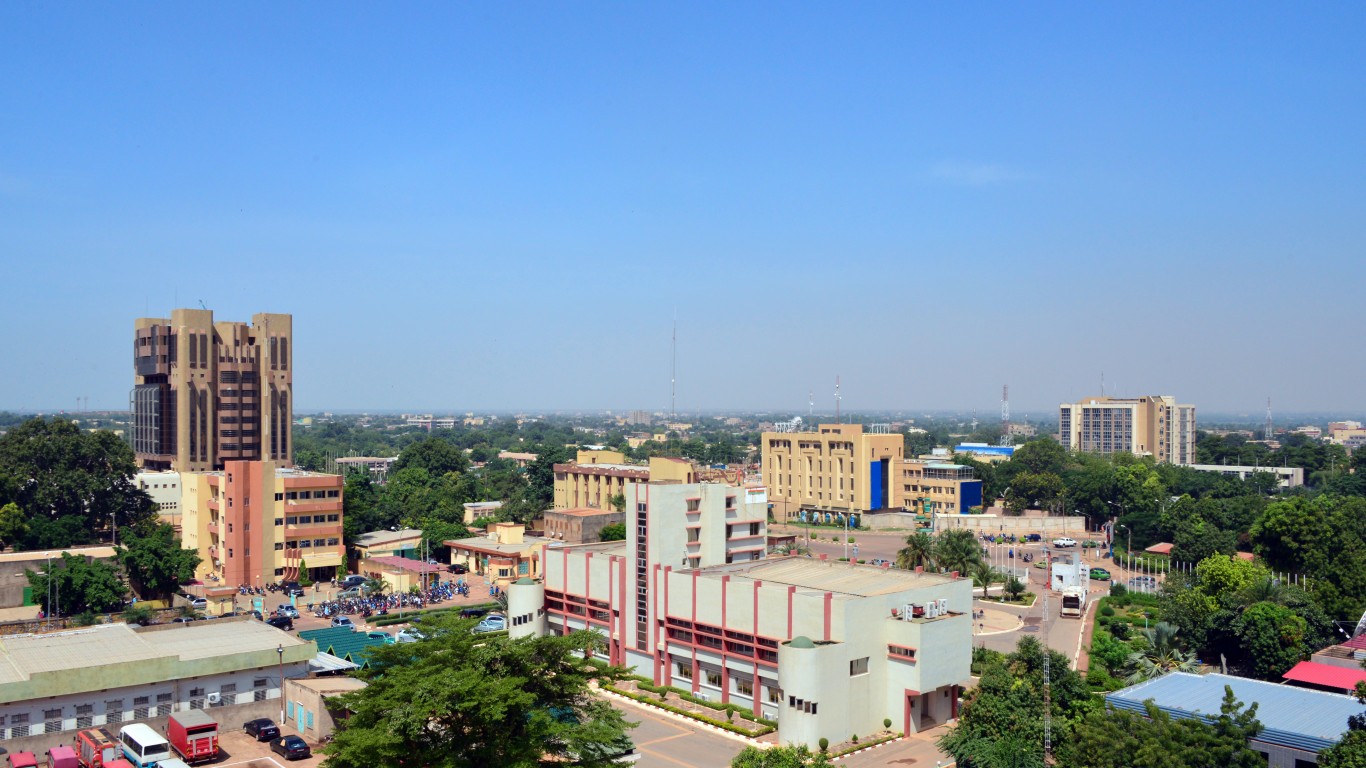
10. Burkina Faso
> Projected population growth 2018-2030: 42.4%
> Population 2018 20.3 million
> Projected population 2030: 28.9 million
> 10-year population change through (2007-2017): 34.7%
A declining mortality rate coupled with a steady fertility rate has been fueling growth in the West African country of Burkina Faso. The nation hasn’t reached its health goals for mothers and children, but there has been an improvement in the maternal mortality rate as well as survival rates for children under age 5. Though Burkina Faso suffers from food shortages and poverty, the country attracts migrants and refugees from nearby countries.
[in-text-ad]
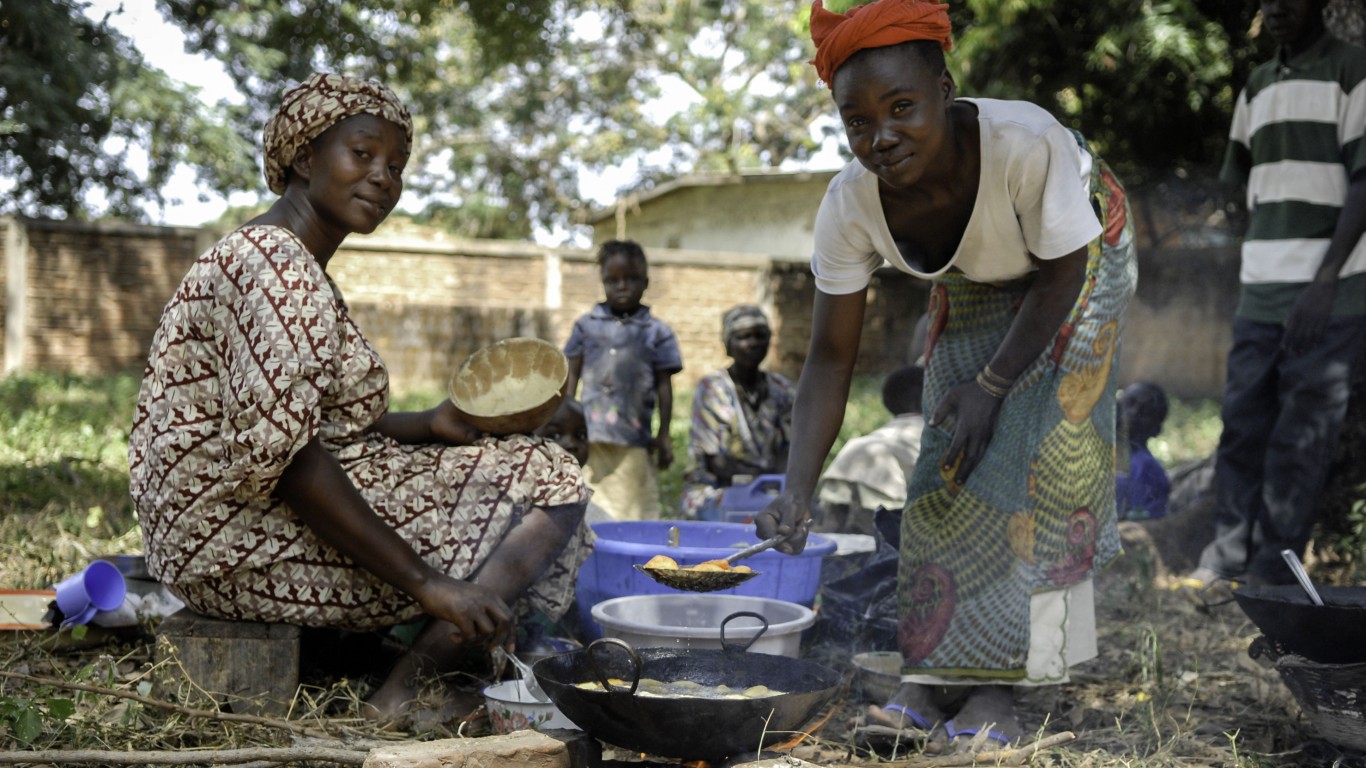
9. Chad
> Projected population growth 2018-2030: 44.2%
> Population 2018 15.4 million
> Projected population 2030: 22.2 million
> 10-year population change through (2007-2017): 38.3%
Between 1960 and 2018, the population of Chad grew from 3 million to 15.4 million. Life expectancy has increased, from a brief 38 years in 1960 to 52 years for males and 54 for females as of 2016. Still, it is considerably below the 2016 global average life expectancy of 72 years. The population of the Central African nation is projected to more than double in size by 2050, but even then the percentage of the population over age 65 is estimated to be a modest 3%.

8. Syrian Arab Republic
> Projected population growth 2018-2030: 45.4%
> Population 2018 18.3 million
> Projected population 2030: 26.6 million
> 10-year population change through (2007-2017): -6.9%
Population in the Syrian Arab Republic, usually referred to simply as Syria, has actually dropped in recent years because of the ongoing effects of the civil war that has been raging there since 2011. In addition to war-related mortality, by 2018, an estimated 11 million Syrians were displaced, creating a refugee crisis. Nevertheless, the population of the Middle Eastern nation is projected to almost double, to 34 million, by 2050, because of a low infant mortality rate of 17 and a high life expectancy rate among women, 77 years old.
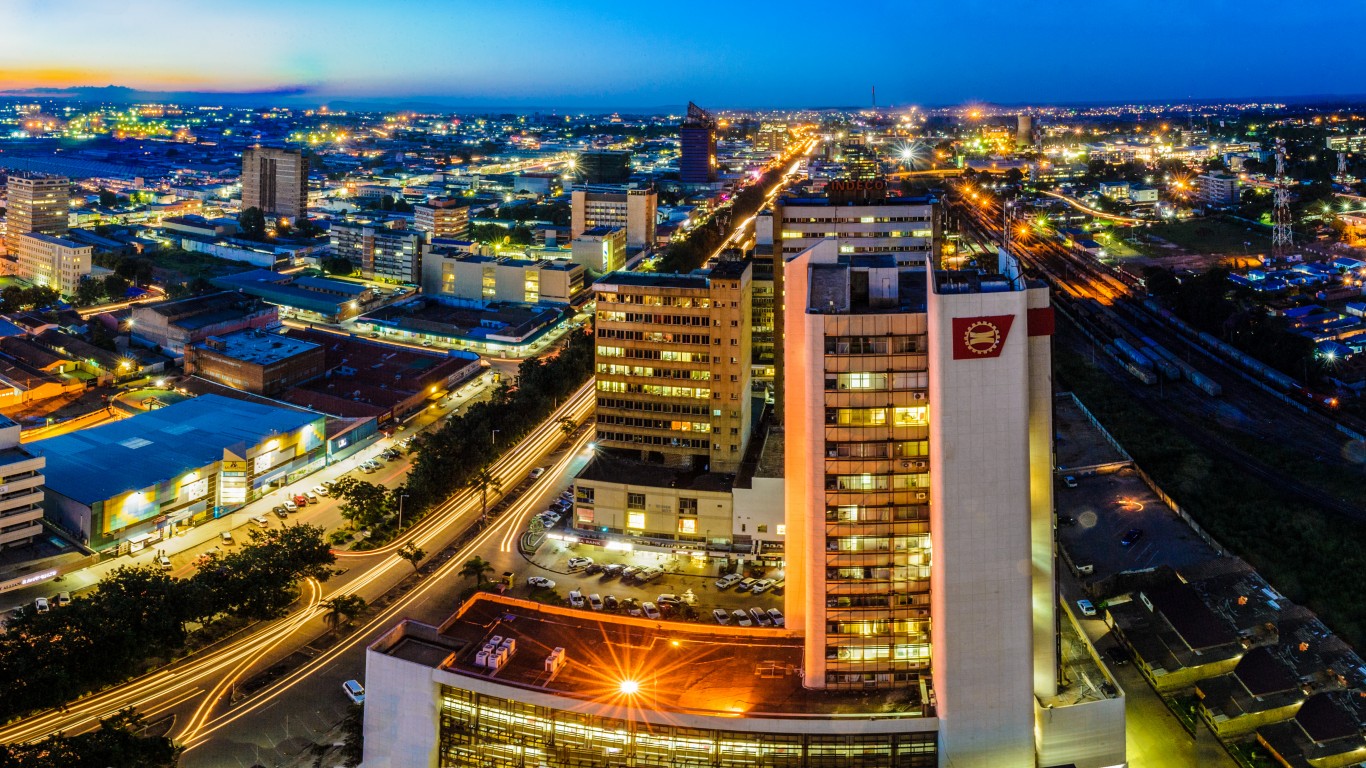
7. Zambia
> Projected population growth 2018-2030: 45.8%
> Population 2018 17.7 million
> Projected population 2030: 25.8 million
> 10-year population change through (2007-2017): 34.3%
Located in south-central Africa, Zambia is a politically stable country with extensive copper resources that have driven its economic growth in recent years. That commodity may help lower the poverty rate in landlocked Zambia; about two-thirds of the people there live in poverty. Over the past 10 years, the population rose by 34% and is expected to reach 17.7 million, with growth predicted to continue to 45.1 million by 2050.
[in-text-ad-2]

6. Burundi
> Projected population growth 2018-2030: 45.8%
> Population 2018 11.8 million
> Projected population 2030: 17.2 million
> 10-year population change through (2007-2017): 36.8%
The small East African nation has the lowest per capita GNP PPP of just $668.48 is also among the 20 countries with the fastest-growing populations. The Republic of Burundi is the continent’s 10th smallest country spanning over less than 28,000 square kilometers. It is also one of the most densely populated African nations, currently accommodating more than 1,000 people per square mile. The population is projected to grow by 45.8% by 2030 and by more than 157% by 2050 resulting in 30.4 million people within Burundi’s borders.
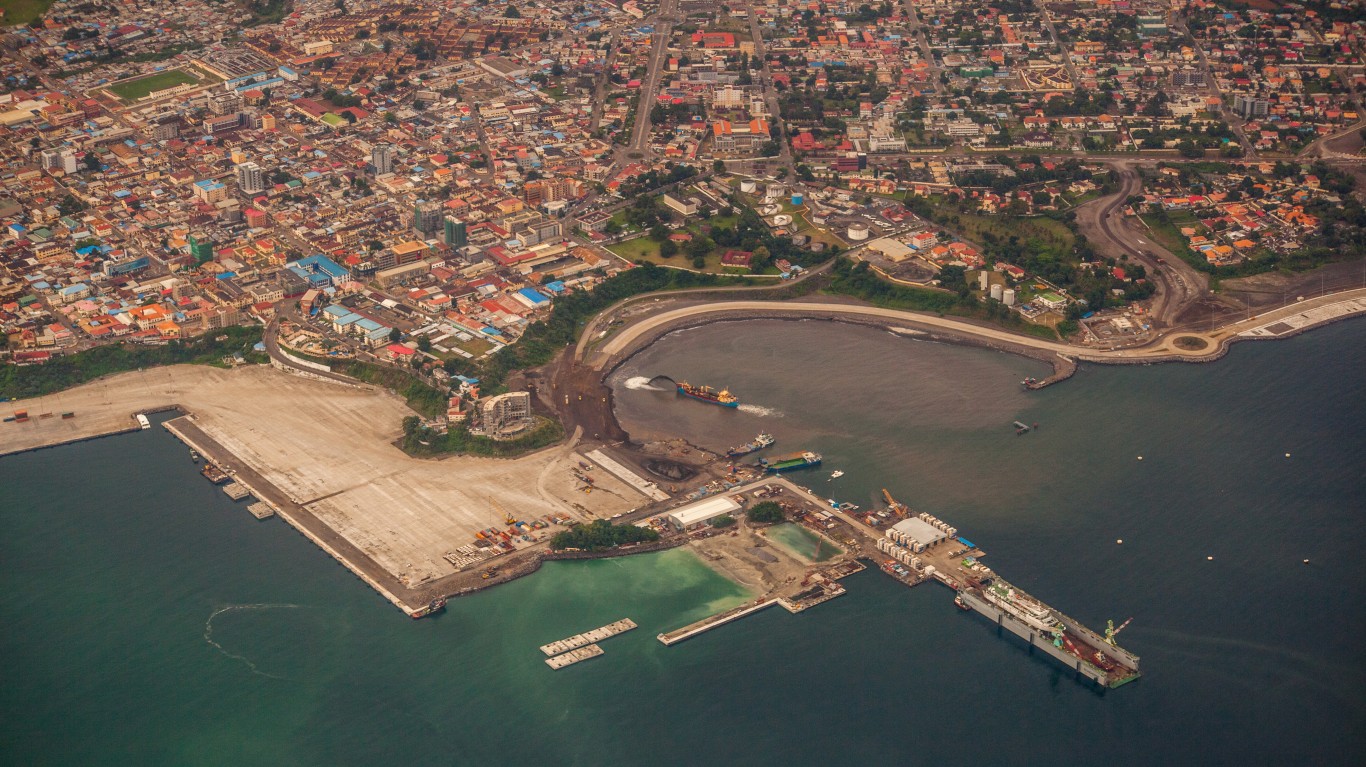
5. Equatorial Guinea
> Projected population growth 2018-2030: 46.2%
> Population 2018 1.3 million
> Projected population 2030: 1.9 million
> 10-year population change through (2007-2017): 52.9%
Unlike many other countries on this list with GDPs per capita below $5,000, Equatorial Guinea has a relatively high GDP per capita of $22,213.74. While the central West African country is known for economic swings (the per capita GDP PPP has ranged from below $1,000 in 1991 to above $40,000 in 2008), population figures are heading only in one direction: Up. Over the past 10 years, the population rose by almost 53%.
[in-text-ad]
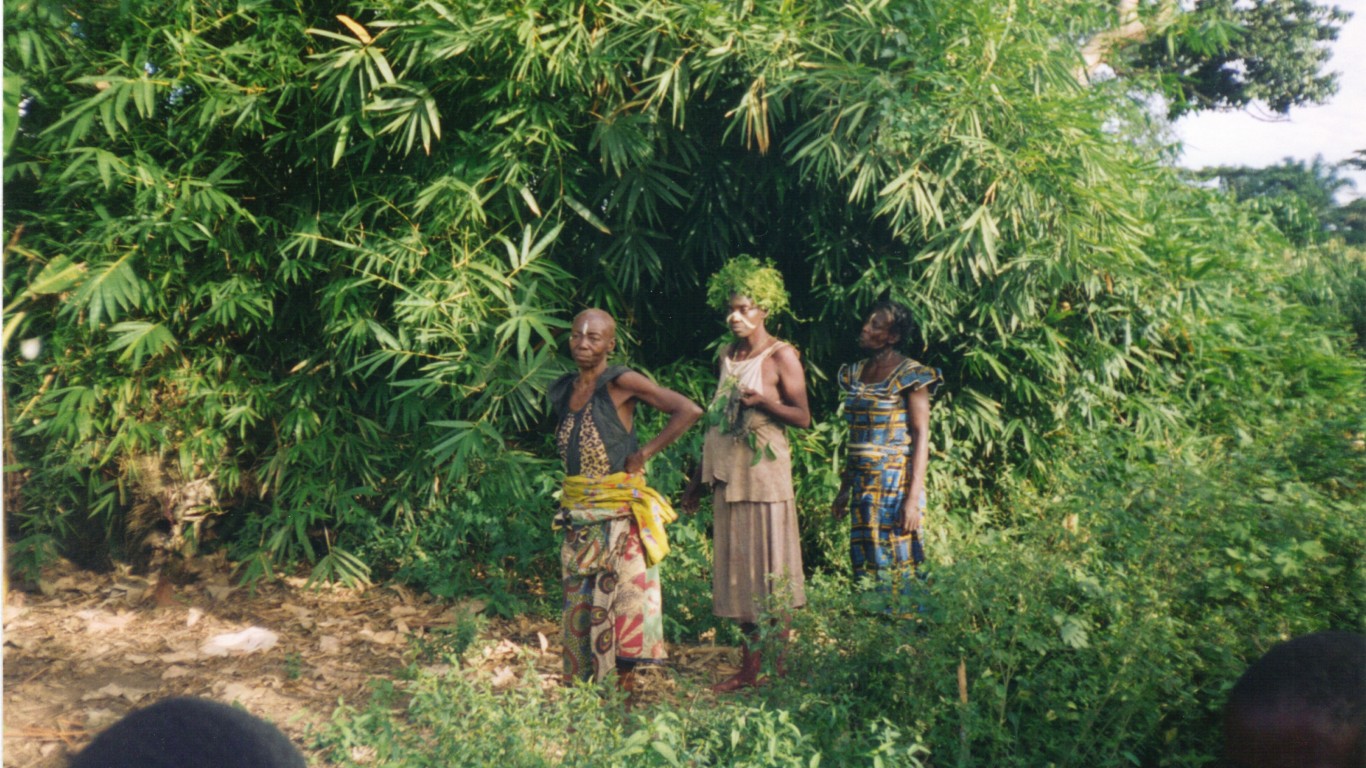
4. Democratic Republic of the Congo
> Projected population growth 2018-2030: 47.4%
> Population 2018 84.3 million
> Projected population 2030: 124.3 million
> 10-year population change through (2007-2017): 39.2%
With a 2018 population that reached about 84.3 million, this Central African country is facing many challenges. The per capita GDP PPP is a meager $808.13, and the nation is in the midst of a measles epidemic, with more than 87,000 suspected cases reported. This most recent health crisis struck on top of ongoing struggles to contain outbreaks of cholera and Ebola. The population, which was below 60 million in 2007, is projected to reach 124.3 million by 2030.
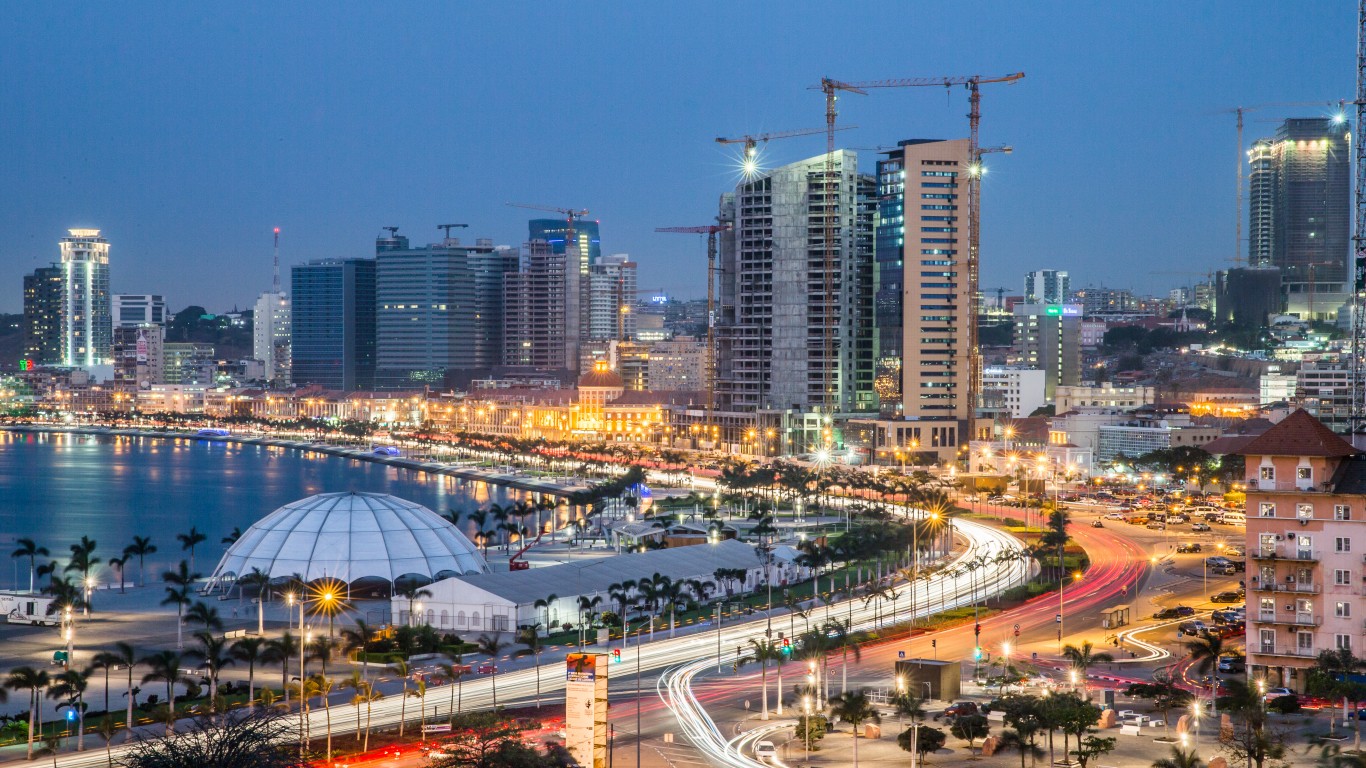
3. Angola
> Projected population growth 2018-2030: 49.3%
> Population 2018 30.4 million
> Projected population 2030: 45.4 million
> 10-year population change through (2007-2017): 41.8%
The second largest oil producer in sub-Saharan Africa, Angola is rich in natural resources and has high economic potential, which it hasn’t been able to realize because of the upheaval of an almost three decades-long civil war. As of 2018, 48% of the 30.4 million population was under 15 years old and only 2% were age 65 and up. A high fertility rate is projected to spur the southern African nation’s total population by a daunting 170% over current numbers by 2050.

2. São Tomé and Príncipe
> Projected population growth 2018-2030: 50.0%
> Population 2018 0.2 million
> Projected population 2030: 0.3 million
> 10-year population change through (2007-2017): 25.3%
This island nation off the west coast of Africa has the distinction of being among the region’s smallest countries, spanning roughly 1,000 square kilometers. With a 2018 headcount of about 200,000, it has one of Africa’s smallest populations, but also one of the most densely populated, with almost 190 people per square kilometer. The outlook includes even less elbow room, as a 50% growth is projected by 2030. With life expectancy of 65 (men) and 69 (women), by 2050 6% of the São Tomé and Príncipe‘s population will be in the 65-plus category, one of the highest shares among the 20 countries with fastest-growing populations.
[in-text-ad-2]
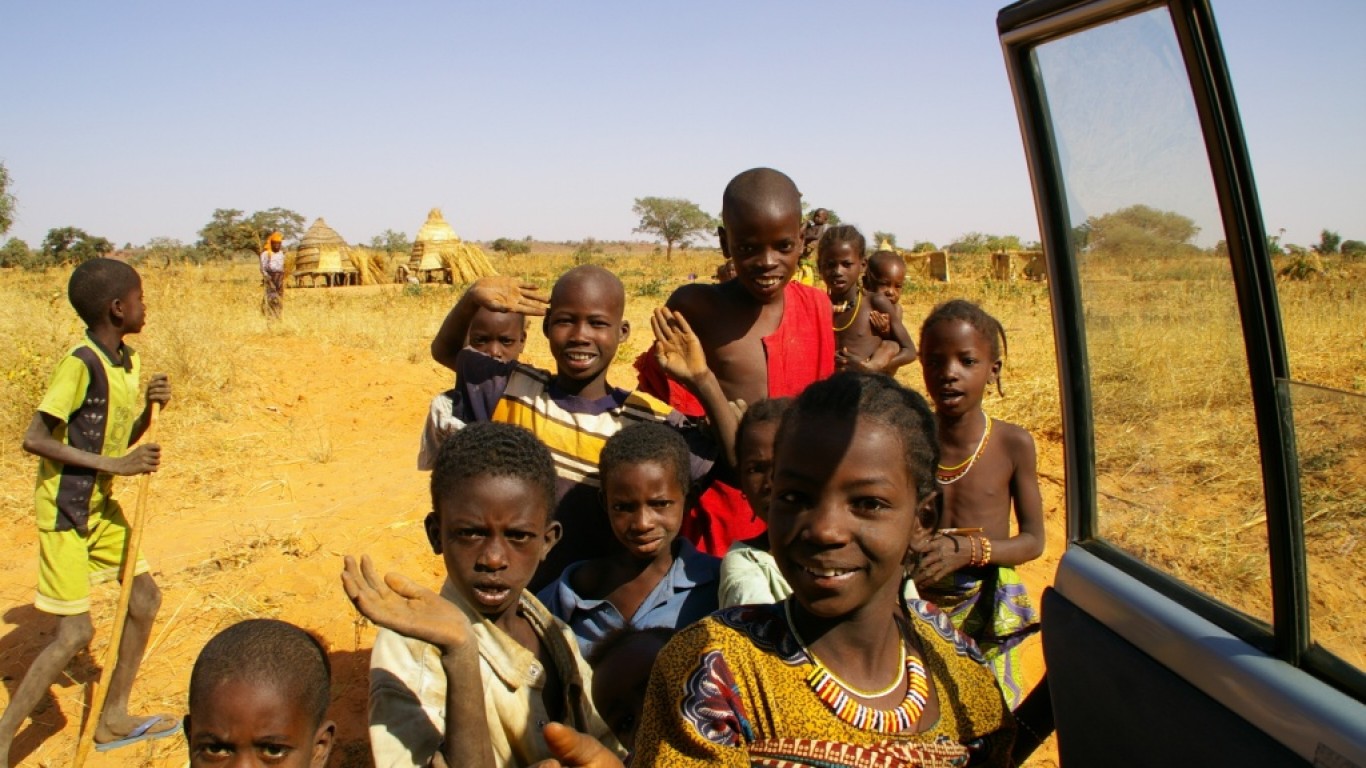
1. Niger
> Projected population growth 2018-2030: 53.2%
> Population 2018 22.2 million
> Projected population 2030: 34.0 million
> 10-year population change through (2007-2017): 46.4%
With 48 births and 10 deaths per 1,000 people each year, the rate of natural population growth for this west African nation stands at 3.8%, the highest in the world. With a full 50% of the population under age 15 in 2018 and a fertility rate of 7.2, the population is expected to jump from 22.2 million to 63.1 million by 2050, a projected growth rate of 184.23%. Though Niger has sizable oil reserves and the government plans to exploit gold, coal, and other resources to sustain growth, as of 2018, the per capita GDP PPP of $990 remains among the world’s lowest.
Get Ready To Retire (Sponsored)
Start by taking a quick retirement quiz from SmartAsset that will match you with up to 3 financial advisors that serve your area and beyond in 5 minutes, or less.
Each advisor has been vetted by SmartAsset and is held to a fiduciary standard to act in your best interests.
Here’s how it works:
1. Answer SmartAsset advisor match quiz
2. Review your pre-screened matches at your leisure. Check out the advisors’ profiles.
3. Speak with advisors at no cost to you. Have an introductory call on the phone or introduction in person and choose whom to work with in the future
Get started right here.
Thank you for reading! Have some feedback for us?
Contact the 24/7 Wall St. editorial team.
 24/7 Wall St.
24/7 Wall St.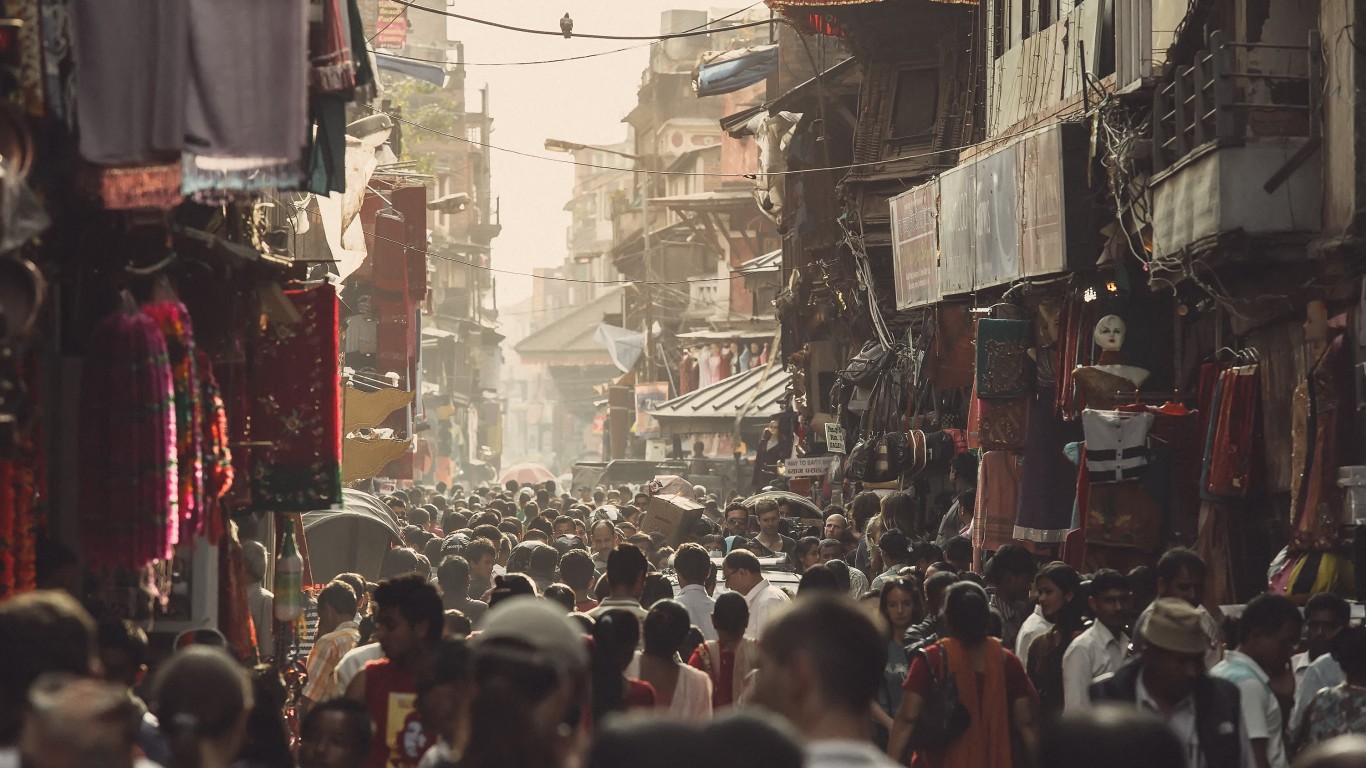 24/7 Wall St.
24/7 Wall St. 24/7 Wall St.
24/7 Wall St.

